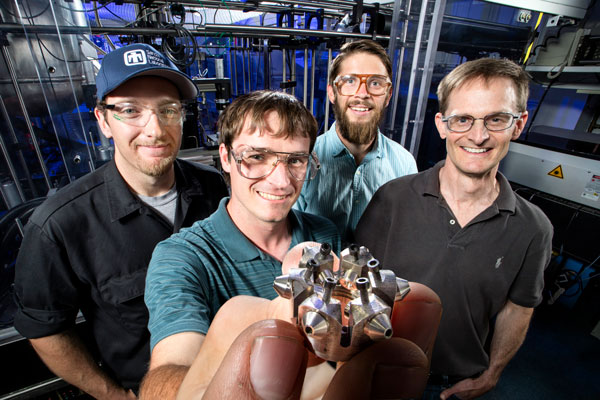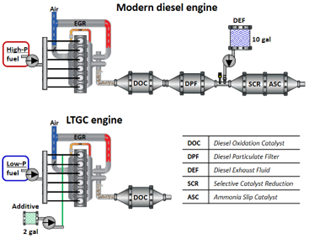
Sandia’s engine combustion research program is sponsored by the Department of Energy Vehicle Technologies Office (VTO) and industry partners. Our research focuses on the sectors prioritized by VTO’s Off-road, Rail, Marine, and Aviation program, conducted in close cooperation with the U.S. automotive and heavy-duty engine industries, energy companies, other national laboratories, and academia.
At Sandia’s Combustion Research Facility (CRF), staff and visiting researchers expand fundamental knowledge of combustion processes by pioneering research into new science and applied concepts. With a focus on difficult real-world challenges and a mandate to share results openly, the CRF continues to be instrumental in helping the transportation sector to develop and deploy innovative, efficient, and affordable solutions that meet consumer requirements.
CRF researchers use advanced, laser-based diagnostics in conjunction with experimental hardware that simulates or closely mimics realistic engine conditions. Research hardware includes several optically accessible engines with production or prototypical engine heads and optically accessible combustion vessels capable of simulating a wide range of potential engine conditions. Optical access in the engines is provided by quartz piston heads, quartz cylinder liners, windowed spacers, and/or periscopes in exhaust valves. The combustion vessels provide enhanced visibility and reproducible conditions to support computational model development. CRF researchers also develop sensitive, quantitative diagnostics for measuring and understanding key combustion and emissions formation processes and the characteristics of the emissions formed.

As part of our engine combustion research, Sandia leads the Engine Combustion Network, an open forum for collaboration among experimental and computational researchers in engine combustion. In addition to research collaborations, Sandia also leads efforts to commercialize Sandia-developed technologies. We are currently partnering to commercialize ducted fuel injection, a technique that holds promise to dramatically reduce particulate emissions in both new engines and retrofits.
A second exploratory effort is developing a low-temperature gasoline combustion (LTGC) strategy. In single-cylinder research, the strategy improved fuel economy by over 20% compared to the market’s leading diesel engines and produced ultra-low particulate and NOx emissions.
Contact
Paul Miles
(925) 294-1512
pcmiles@sandia.gov
Isaac Ekoto
(925) 315-2032
iekoto@sandia.gov